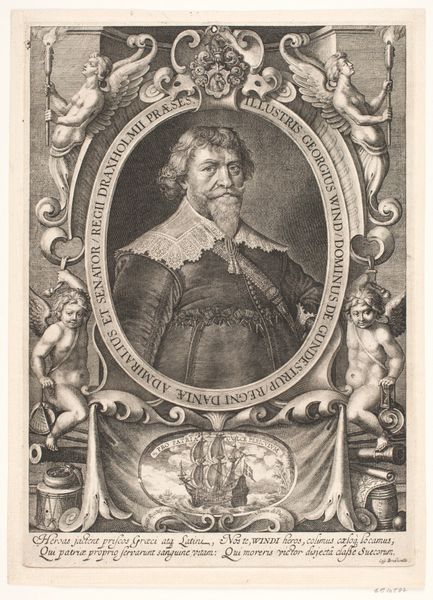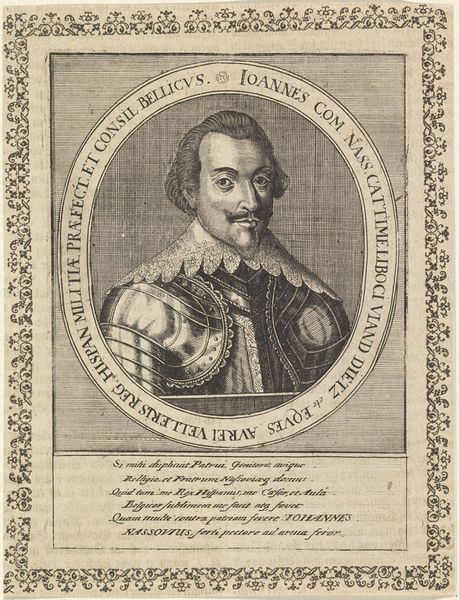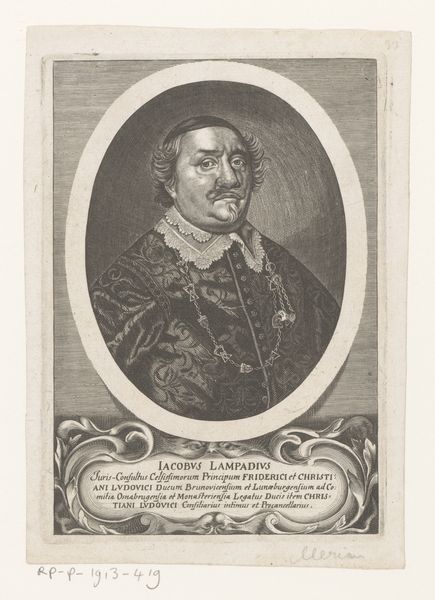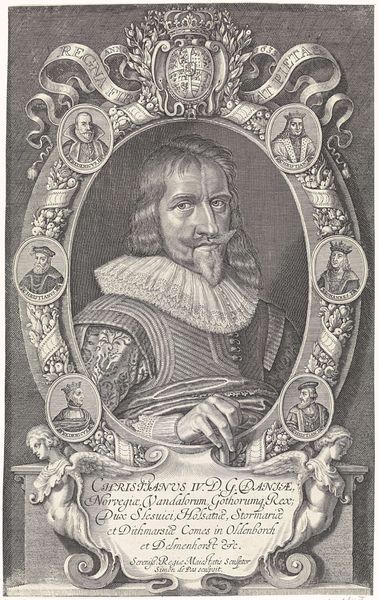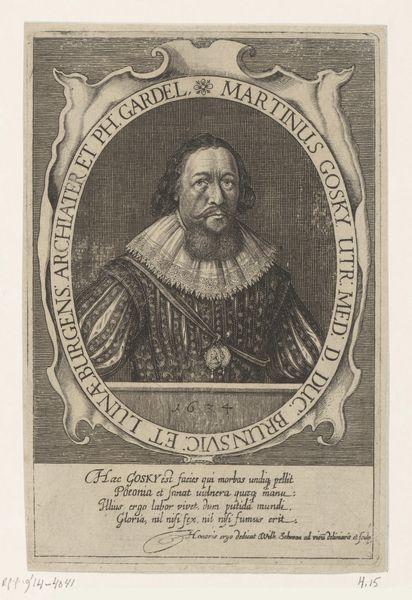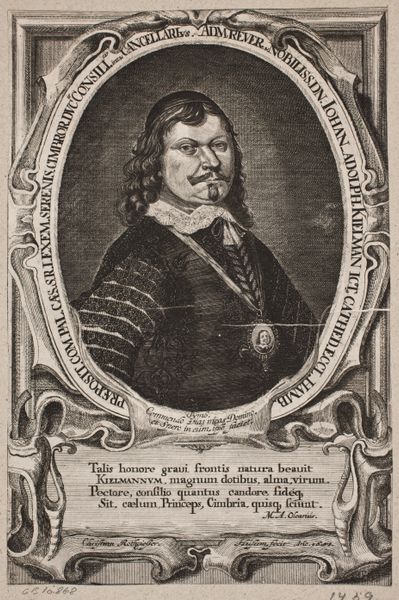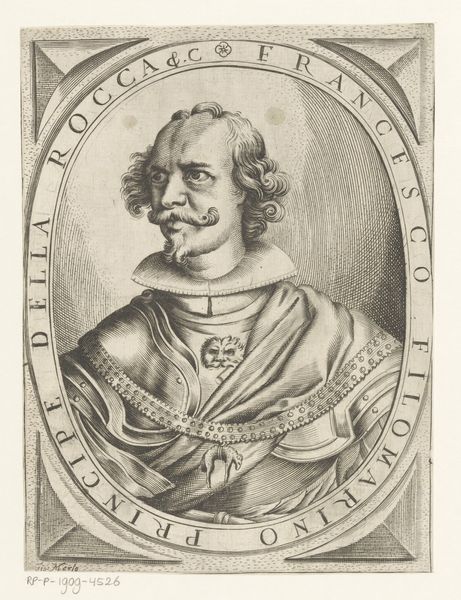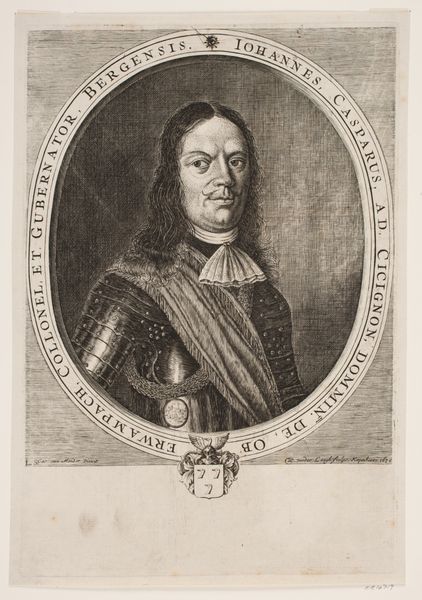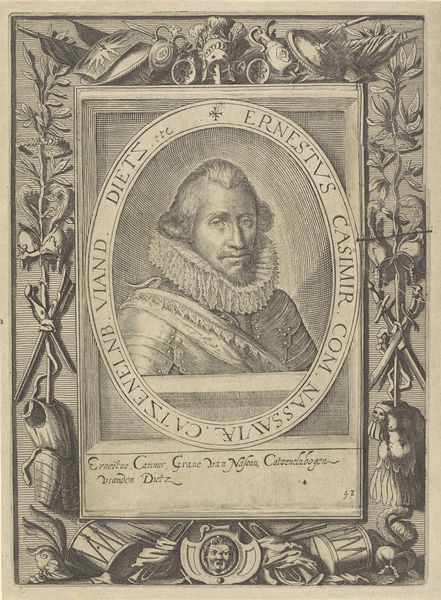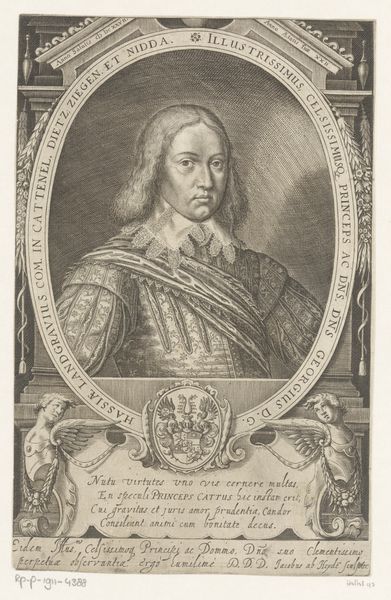
print, engraving
#
portrait
#
aged paper
#
toned paper
#
medieval
#
baroque
# print
#
old engraving style
#
figuration
#
history-painting
#
engraving
Dimensions: height 183 mm, width 143 mm
Copyright: Rijks Museum: Open Domain
Curator: Here we have a print, made sometime between 1615 and 1699, titled *Portret van Lodewijk Hendrik, graaf van Nassau-Dillenburg,* which translates to Portrait of Louis Henry, Count of Nassau-Dillenburg. The piece is attributed to an anonymous artist, working in engraving. Editor: My first impression is of stark formality. The subject's rigid pose and the meticulous detail of his attire suggest a powerful figure very aware of his public image. The text surrounding him even feels like a sort of pronouncement. Curator: Precisely. Louis Henry was, after all, a Count during a tumultuous period in Europe, head of an important aristocratic family. The elaborate frame of text serves to declare his lineage and status; note also the details of his armor, the lace collar—all indicators of rank and wealth intended to project an image of power and legitimacy. Editor: Absolutely. There’s a vulnerability present too, though. The sharpness of the engraving creates harsh lines that almost seem to etch anxieties onto his face. Perhaps it’s the weight of those societal expectations pressing down? We must wonder too about access to portraiture; who could commission these images and how did they further entrench dynastic authority? Curator: The Count probably commissioned the work himself as a statement. Such imagery was vital in disseminating power; portraits such as these would circulate throughout the upper classes, cementing his position in the intricate web of European politics and genealogy. It's an excellent example of how portraiture became a tool for shaping perception. Editor: The details surrounding Louis, such as the lace or the intricate curls of his hair, serve to highlight the sitter's commitment to upholding beauty standards and courtly ideals, too. I think you are right; a portrait of that nature would have solidified this person in history. Curator: It also represents the tension between individual identity and constructed representation. A battle of ideals! Editor: Thank you, that was definitely insightful! Curator: I appreciate your remarks! It certainly helps broaden our view of the piece.
Comments
No comments
Be the first to comment and join the conversation on the ultimate creative platform.

